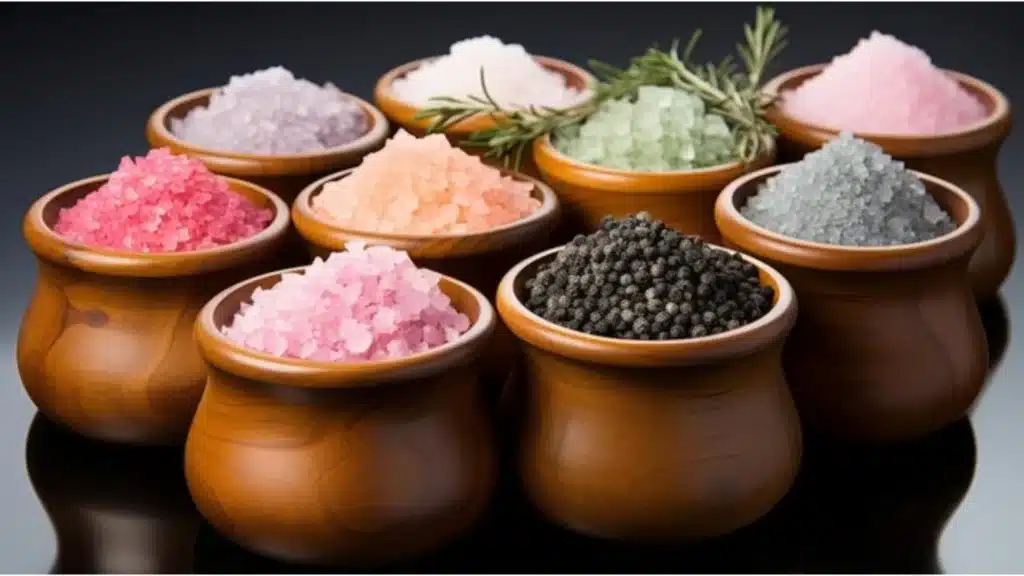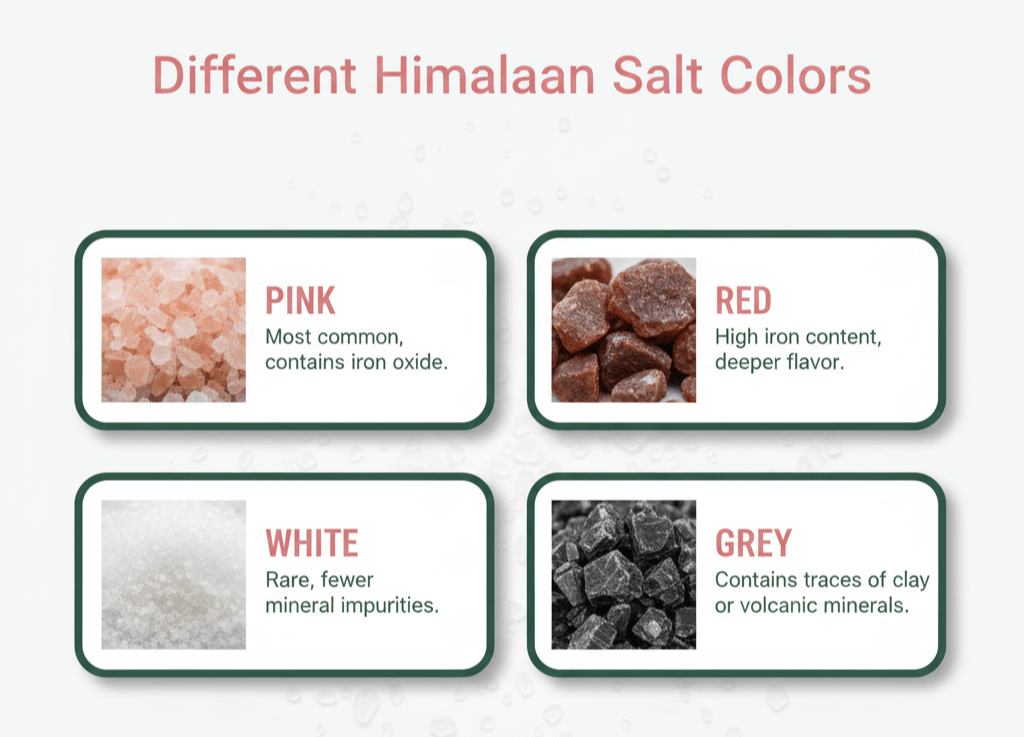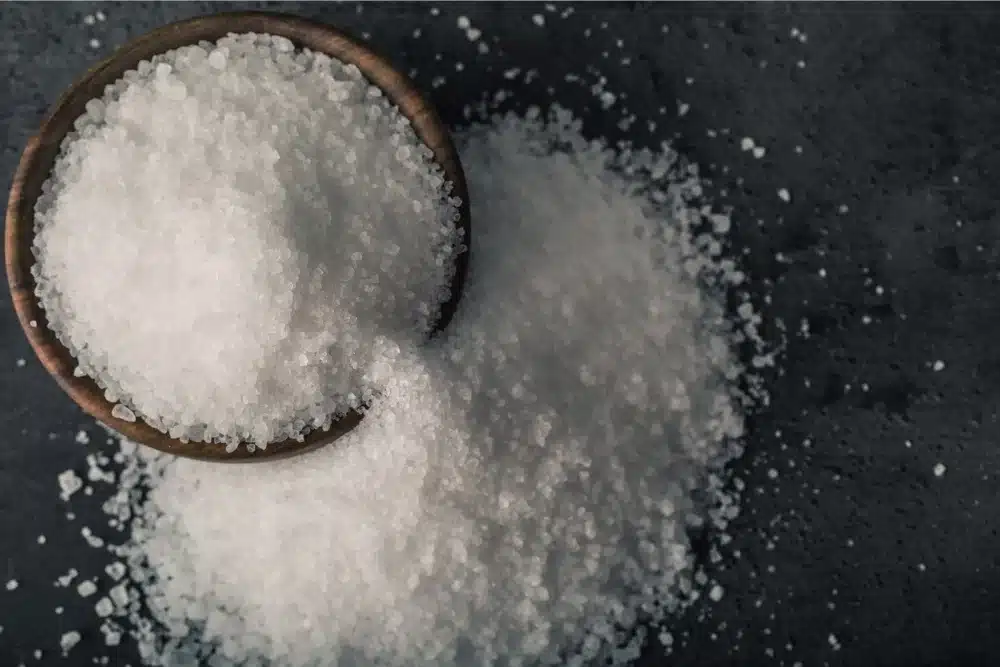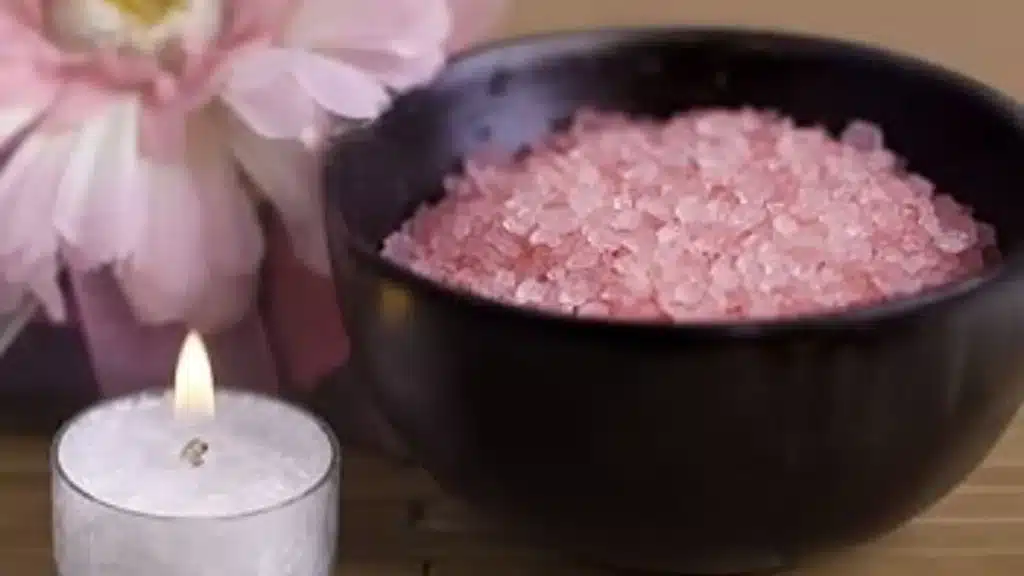
Ever noticed that Himalayan salt doesn’t always look the same? Sometimes it’s light pink, sometimes deep red, and even pure white. These different Himalayan salt colors are more than just pretty shades; they reveal the salt’s mineral content, purity, and uses. Whether you’re adding it to food, using it in skincare, or enjoying the glow of a salt lamp, understanding these colors can help you make the best choice.
Table of Contents

What Makes Himalayan Salt Special?
Himalayan salt comes from the ancient Khewra Salt Mine in Pakistan, one of the largest and oldest salt mines in the world. Formed millions of years ago when ancient oceans evaporated, this salt is packed with over 84 trace minerals like iron, calcium, magnesium, and potassium, but in negligible amounts (e.g., 1 teaspoon provides only 0.0369 mg iron per gram, far below daily needs).[1]
Unlike refined table salt, Himalayan salt is natural, unprocessed, and valued for both its health benefits and unique beauty.
Did You Know?
The color of Himalayan salt is directly linked to the concentration of minerals like iron oxide.
The Different Himalayan Salt Colors Explained
Each color of Himalayan salt tells its own story. Here’s what they mean:
1. White Himalayan Salt

- Purest type with very few impurities.
- Found in the upper layers of the mine.
- Flavor: clean, neutral.
- Best for: delicate dishes like seafood, salads, or baking.
Iron (Fe) in pink Himalayan salt averages 64 mg/kg (range: 0–168), compared to 0 mg/kg in white table salt, and higher in black Himalayan salt.[2]
2. Pink Himalayan Salt

- Most famous and widely available type.
- Pink shade comes from iron oxide and other trace minerals.
- Flavor: mild, versatile.
- Best for: everyday cooking, seasoning, and also for salt lamps.
The pink color in Himalayan salt primarily comes from iron oxide (rust), with iron levels up to 167.52 mg/kg in pink varieties, while white Himalayan salt has lower iron (<16 ppm), resulting in less coloration.[3]
Explore:
Why Is Himalayan Salt Pink
How to Use Pink Himalayan Salt for Daily Hydration
3. Red or Brownish Himalayan Salt
- Rich in iron oxide, giving it a darker shade.
- Flavor: bold, slightly earthy or metallic.
- Best for: grilled meats, soups, BBQ rubs, and hearty dishes.
4. Grey Himalayan Salt
- A rare variation with mixed mineral deposits.
- Sometimes compared in grey salt vs pink salt discussions.
- Flavor: unique and varied.
- Best for: gourmet cooking or food presentation.
Black Himalayan salt has a sulfur-like odor and irregular crystalline structure (quadrilateral, cubic, prismatic), with lower sodium levels than pink salt or sea salt, and higher antioxidant activity in vitro.[4]
Explore:
How to Make Black Salt
Does Black Salt Expire
In the Khewra mine (source of most Himalayan salt), variations include pink (exported commonly), white (purer, less mineralized), and occasional black or reddish hues due to mineral impurities.[5]
Table: Comparison of Different Himalayan Salt Colors
Salt Color | Mineral Richness | Flavor Profile | Best Use |
White | Very low impurities | Clean, light taste | Salads, seafood, baking |
Pink | Balanced minerals | Mild, versatile | Everyday meals, lamps |
Red/Brownish | High iron content | Bold, earthy | Meat, soups, marinades |
Grey | Rare mineral blend | Unique, gourmet | Special dishes, presentation |
White vs Pink Salt: Which One Is Better?
The debate of white vs pink salt comes down to taste and use. White Himalayan salt is milder and doesn’t change the flavor of delicate meals. Pink salt, on the other hand, is richer in minerals and more popular for daily cooking and table use. Both are healthy and natural so your choice depends on your preference.
Read More: Black Salt vs Pink Salt
Different Color Salt Lamps and Their Meanings
Himalayan salt isn’t just for eating it’s also carved into salt lamps that come in different shades. While the science on their benefits is limited, many people enjoy them for their beauty and calming effect.
- Light Pink: calming, great for bedrooms.
- Dark Red/Orange: cozy and grounding, perfect for living rooms.
- White: modern, clean, and stylish for minimalist décor.
Salt lamps are believed to promote relaxation, purify air, and improve mood making them popular for homes, spas, and meditation spaces.
Which Himalayan Salt Color Should You Use?
Here’s a quick guide:
- For Cooking Everyday Meals: pink salt.
- For Special Dishes & Baking: white salt.
- For Rich Flavors & Meat Dishes: red or brown salt.
- For Decor & Relaxation: different color salt lamps.
Read About: How to Use Himalayan Salt for Cooking
Key Takeaways
- Himalayan salt naturally comes in different colors white, pink, red/brown, and grey each with its own mineral makeup and taste.
- White vs pink salt is the most common comparison, with white being mild and pink being rich in minerals.
- Different color salt lamps add beauty to your home while creating a relaxing atmosphere.
- No matter the color, all Himalayan salts are natural, mineral-rich, and healthy.
Potassium (K) in pink Himalayan salt averages 2,406 mg/kg (range: 98–4,529), compared to 152 mg/kg in white table salt.[6]
At Sobaan Salt, we bring you authentic Himalayan salt in every shade from crystal-white to deep red so you can enjoy its full range of benefits, whether in your food, your home, or your wellness routine.
Himalayan salt contains over 80 trace minerals, including iron, calcium, magnesium, and potassium, with its color variations white, pink, red/brown, and grey, reflecting different mineral concentrations. Approximately 98% of Himalayan salt is sodium chloride, similar to table salt, but its trace minerals contribute to its unique flavor and health benefits. Source: Healthline
References:
Share This Post
Article By

